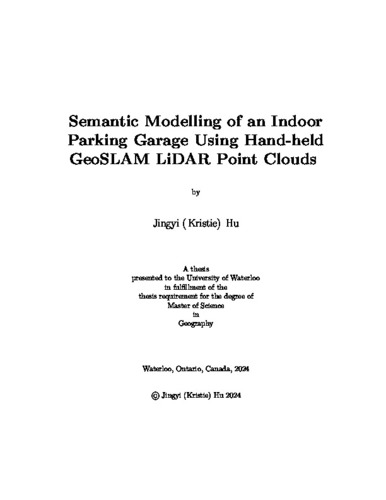| dc.description.abstract | The development of high-definition (HD) digital twin models for underground parking lots presents significant challenges due to the absence of signals from satellite navigation systems, fluctuating lighting conditions, and obstruction-rich environments. These complexities hinder applications that rely on accurate spatial awareness, such as emergency rescue, navigation assistance, and autonomous parking. This thesis presents an elaborate methodology for generating an HD digital model of an indoor parking lot. A LiDAR-based Simultaneous Localization and Mapping (SLAM) system was used for point cloud acquisition and colorization. The methodology encompasses the application of leading-edge algorithms, including line feature extraction, semantic segmentation, and surface reconstruction. The effectiveness of the proposed methodology is underscored by parallel comparisons of ground truth with visual output (e.g., line segmentation, and reconstructed models). Notably, segmentation via DCTNet achieves high-performance metrics in the average class IoU of the model (90.74%) and average F1 score (98.65%). Overall, these demonstrate the efficiency of the proposed methodology in developing a detailed indoor parking garage
model using advanced LiDAR-based SLAM technology, addressing challenges in GPS and lighting, and providing crucial insights for future advancements in 3D indoor modelling through comprehensive accuracy assessments and semantic enhancements. | en |

